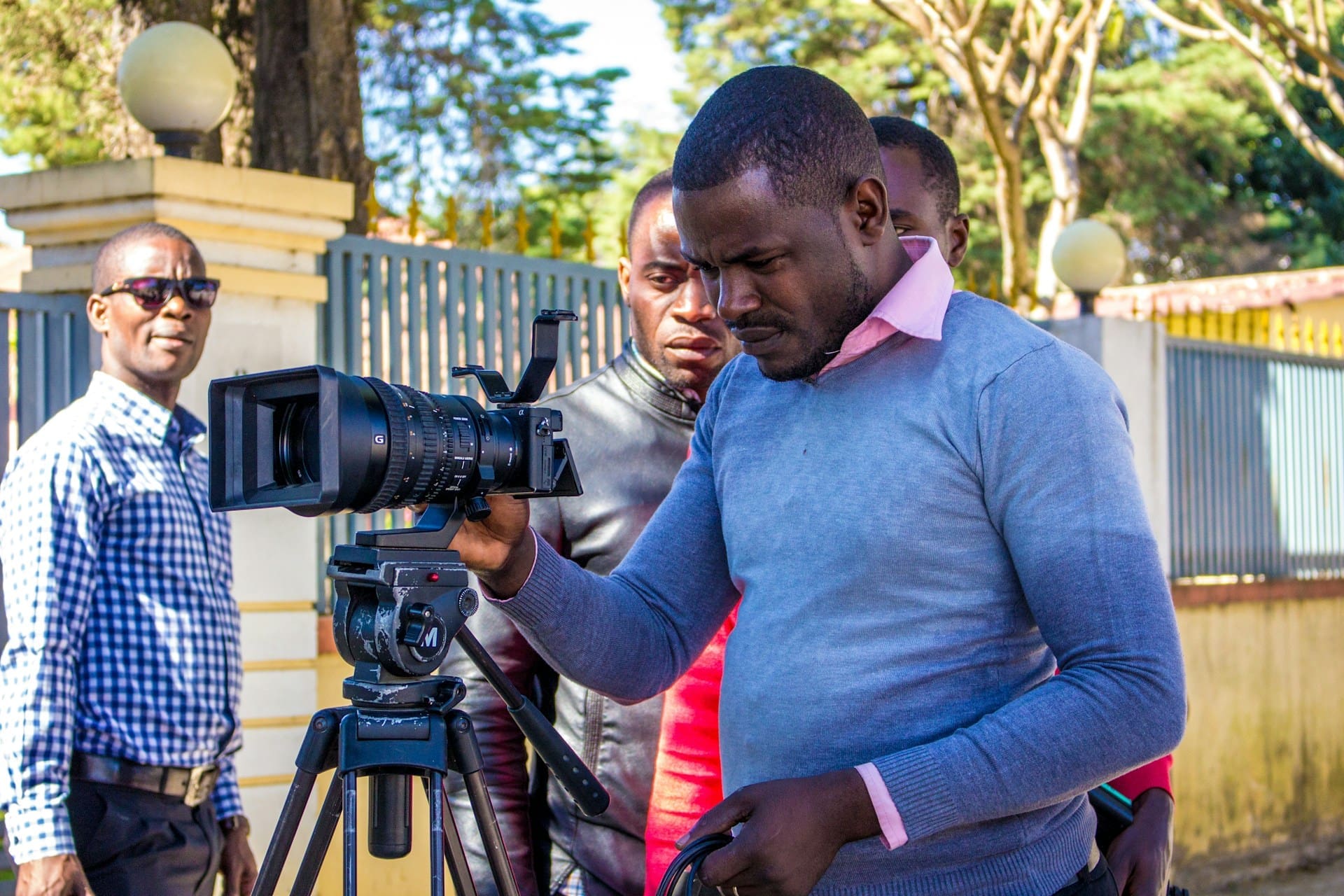
Image: Man in blue sweater holding black dslr camera. ©Unsplash
15/07/25
Blog
How to pitch a science story
Speed read
- It’s important to become comfortable with making a compelling pitch to editors.
- All science journalists need a good understanding of what makes news in science.
If you want to earn a living from science journalism, one of the most important things you can do is learn how to pitch a science story. It’s important to become comfortable with making a compelling pitch to editors. You need to keep three things in mind when it comes to pitching. You must convince the editor that your story idea is 1) interesting, 2) important and 3) urgent.
All science journalists need a good understanding of what makes news in science. However, a journalist earning a living from science journalism will know how to make their story idea so compelling that the editor cannot say no. In my previous blogs, I’ve looked at what makes news in science. I’ve also looked at techniques for making scientific information attractive to non-specialists. We can use these techniques to persuade editors that your story idea is worth running.
Techniques for pitching to an editor
To pitch a science story, let’s look at the environment in which editors work. Understanding this will help you quickly catch their attention and convince them that you have a newsworthy idea.
Editors are busy people
If you call, they may not have much time to talk. Most editors these days prefer an email. You’ll need to grab their attention in the few sentences. Remember, when you pitch a science story, make the subject line of your email stand out. The subject line and the first line of the pitch should get straight to the point and be interesting enough to keep the editor reading.
Editors must grow their audiences
Most editors are under constant pressure to grow their audiences. If your story engages the outlet’s readership, your pitch is more likely to succeed. So, you must persuade the editor that the story you will write will engage their audiences.
Points for a good pitch
Many people will be competing for an editor’s attention at any given time. So how do you stand out from the crowd? The guidelines and templates for pitching a science story will differ from one media organization to another. However, you will usually find that they have these elements in common.
Tell them what the story is
You should be able to tell the editor your story in one sentence, and it should be clear and concise. You should show that your story will reveal something new. The ‘news’ could cover many things. It might be a new event or trend or new research finding. It might be a controversial viewpoint or an important announcement. But you must be able to describe it in one sentence.
Tell them why your story matters
When you pitch a science story, you must also be able to tell the editor quickly why your story matters. Let them know what’s at stake. Explain why people should care about this story. Describe the new development and how it affects citizens or, more broadly, society.
Let them know why this story matters now, at this point in time
A good story has urgency and should be timely. Make it clear why the story must be told now and not later. It might be that the subject matter is topical and weighing on people’s minds already. Perhaps the story must be told now because there could be a lot to lose if the public doesn’t learn about the development. Maybe your story covers something the public is urgently waiting to hear more about – whether the news is good or bad.
Explain how you plan to approach the story
The points above help you hook the editor’s attention when you pitch a science story. If they’re interested in the first points, they’ll still be reading and want to know how you’ll approach the story. This includes:
1. What type of information you’ll gather
2. Where you’ll gather the information
3. What issues you’ll focus on
4. Who you plan to interview
5. What questions you’ll ask
6. What kind of research you’ll be conducting
If you can condense all of this information into a concise pitch, you’re more likely to persuade an editor to work with you. The next step is to deliver on your pitch and submit a strong story. You can learn more about this on the Script website.
To learn more about science communication, read Science Communication Skills for Journalists by Dr Charles Wendo. And take our free online course, Script.
You might also like
- Two ways to structure a science story
- How to make a science story interesting
- Using quotes in science stories
- Launching a career in science journalism
